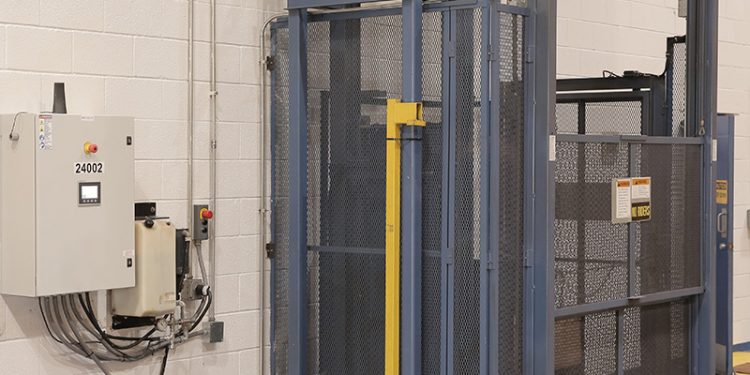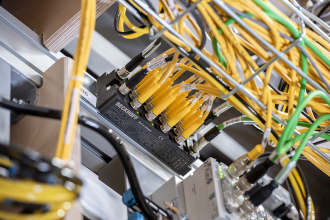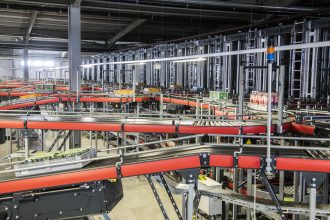Safety Features within VRCs

The priority of any material handling operation in a manufacturing facility is safety. Vertical Reciprocating Conveyors (VRCs) are commonly used to move materials between different levels, but they are also widely used to interface with other manufacturing equipment. Both uses can require an increased focus on safety. You not only want to protect personnel using the equipment, but also the materials as they are being transferred.
Vertical Reciprocating Conveyors (VRCs) offer one of the safest methods for moving goods and materials between levels. All VRCs are required by ANSI/ASME B20.1 code to have enclosures and gates to protect personnel while the lift is operational, as well as the surrounding area within the facility. VRCs can also be integrated with various design options to enhance safety further for specific operational requirements.
Advanced Safety Measures
VRCs are used in a variety of production applications including interfacing with other manufacturing equipment, from high-speed conveyors to robotics and AGVs that assist in loading materials onto the VRC carriage. Interfacing VRCs with other manufacturing equipment requires careful attention to safety. Safety measures may include proximity sensors, photoelectric eyes, or smart controllers to detect the presence of objects or workers and prevent unsafe conditions.
A further look into these specialized options:
- Powered Deck Locks
When the VRC carriage arrives at the designated level, powered deck locks are controlled to automatically lock the carriage in place while loading/unloading or when maintenance work is carried out.
- Automated Control Systems
To ensure smooth coordination between the VRC and other manufacturing equipment, an automated control system can be implemented. This system enables communication and synchronization between the VRC and other equipment, such as conveyors, robots, or production lines. By integrating the control systems, you can establish protocols for timing, signaling, and data exchange, allowing for efficient material flow and reducing the risk of bottlenecks or collisions.
- Load Cells & Visual Light Indicators
While many VRCs can handle huge loads, it’s important to have a system in place that monitors potential overloads. Load cells can gauge and monitor load capacity while visual light indicators signal the operator when loads are approaching capacity. This not only creates a safe operation but protects the integrity of the equipment in the long run.
- Proximity Sensors/Photo eyes
Photo eyes and sensors are used to detect the presence of objects or materials on the VRC platform or in the surrounding areas. They emit infrared or laser beams and measure the reflection or interruption of these beams to determine if an object is present. This helps prevent the VRC from operating when there is an obstruction, avoiding collisions or damage to goods and equipment.
There are many options available to improve your safety requirements. It’s important to note that the specific interface requirements may vary depending on the equipment being integrated, and the unique needs of your manufacturing process. Consulting with VRC manufacturers can provide valuable insights and guidance tailored to your specific setup.
To learn more about MHI’s CSS-VRC industry group: https://www.mhi.org/conv/vrclift
To read more about VRC’s:
Why A Vertical Reciprocating Conveyor Can Play A Critical Role …
Resource Shares Details On Vertical Reciprocating Conveyor Applications
Learn More About Different Automated Sortation And Conveyor Systems With …



